Brazilian recommendations of mechanical ventilation 2013. Part 2
- PMID: 25410835
- PMCID: PMC4263328
- DOI: 10.1590/s1806-37132014000500003
Brazilian recommendations of mechanical ventilation 2013. Part 2
Abstract
Perspectives on invasive and noninvasive ventilatory support for critically ill patients are evolving, as much evidence indicates that ventilation may have positive effects on patient survival and the quality of the care provided in intensive care units in Brazil. For those reasons, the Brazilian Association of Intensive Care Medicine (Associação de Medicina Intensiva Brasileira - AMIB) and the Brazilian Thoracic Society (Sociedade Brasileira de Pneumologia e Tisiologia - SBPT), represented by the Mechanical Ventilation Committee and the Commission of Intensive Therapy, respectively, decided to review the literature and draft recommendations for mechanical ventilation with the goal of creating a document for bedside guidance as to the best practices on mechanical ventilation available to their members. The document was based on the available evidence regarding 29 subtopics selected as the most relevant for the subject of interest. The project was developed in several stages, during which the selected topics were distributed among experts recommended by both societies with recent publications on the subject of interest and/or significant teaching and research activity in the field of mechanical ventilation in Brazil. The experts were divided into pairs that were charged with performing a thorough review of the international literature on each topic. All the experts met at the Forum on Mechanical Ventilation, which was held at the headquarters of AMIB in São Paulo on August 3 and 4, 2013, to collaboratively draft the final text corresponding to each sub-topic, which was presented to, appraised, discussed and approved in a plenary session that included all 58 participants and aimed to create the final document.
Figures


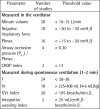






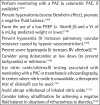

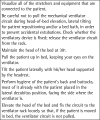




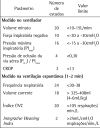






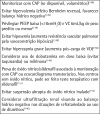

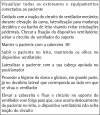


Similar articles
-
Brazilian recommendations of mechanical ventilation 2013. Part I.J Bras Pneumol. 2014 Jul-Aug;40(4):327-63. doi: 10.1590/s1806-37132014000400002. J Bras Pneumol. 2014. PMID: 25210957 Free PMC article. Review.
-
Brazilian recommendations of mechanical ventilation 2013. Part 2.Rev Bras Ter Intensiva. 2014 Jul-Sep;26(3):215-39. doi: 10.5935/0103-507x.20140034. Rev Bras Ter Intensiva. 2014. PMID: 25295817 Free PMC article.
-
Brazilian recommendations of mechanical ventilation 2013. Part I.Rev Bras Ter Intensiva. 2014 Apr-Jun;26(2):89-121. doi: 10.5935/0103-507x.20140017. Rev Bras Ter Intensiva. 2014. PMID: 25028944 Free PMC article. Review.
-
Joint statement on evidence-based practices in mechanical ventilation: suggestions from two Brazilian medical societies.J Bras Pneumol. 2025 Feb 10;51(1):e20240255. doi: 10.36416/1806-3756/e20240255. eCollection 2025. J Bras Pneumol. 2025. PMID: 39936726 Free PMC article.
-
Joint statement on evidence-based practices in mechanical ventilation: suggestions from two Brazilian medical societies.Crit Care Sci. 2025 Feb 3;37:e20250242en. doi: 10.62675/2965-2774.20250242-en. eCollection 2025. Crit Care Sci. 2025. PMID: 39907364 Free PMC article.
Cited by
-
The next 40 years.J Bras Pneumol. 2015 Sep-Oct;41(5):404. doi: 10.1590/S1806-37132015000500008. J Bras Pneumol. 2015. PMID: 26578129 Free PMC article. No abstract available.
-
Association of Functional Characteristics and Physiotherapy with COVID-19 Mortality in Intensive Care Unit in Inpatients with Cardiovascular Diseases.Medicina (Kaunas). 2022 Jun 18;58(6):823. doi: 10.3390/medicina58060823. Medicina (Kaunas). 2022. PMID: 35744086 Free PMC article.
-
Reflex cough PEF as a predictor of successful extubation in neurological patients.J Bras Pneumol. 2015 Jul-Aug;41(4):358-64. doi: 10.1590/S1806-37132015000004453. J Bras Pneumol. 2015. PMID: 26398756 Free PMC article.
-
Association between delta anion gap/delta bicarbonate and outcome of surgical patients admitted to intensive care unit.BMC Anesthesiol. 2024 Oct 9;24(1):363. doi: 10.1186/s12871-024-02564-z. BMC Anesthesiol. 2024. PMID: 39385064 Free PMC article.
-
Correlation between the severity of critically ill patients and clinical predictors of bronchial aspiration.J Bras Pneumol. 2016 Apr;42(2):114-20. doi: 10.1590/S1806-37562015000000192. J Bras Pneumol. 2016. PMID: 27167432 Free PMC article.
References
-
- Brozek J, Oxman AD, Schünemann HJ. [2012];GRADEpro (Computer Program) Version 3.2 for Windows. a Available at http://www.cc-ims.net/revman/gradepro.
-
- Hernandez G, Fernandez R, Lopez-Reina P, Cuena R, Pedrosa A, Ortiz R, et al. Noninvasive ventilation reduces intubation in chest trauma-related hypoxemia: a randomized clinical trial. Chest. 2010;137(1):74–80. - PubMed
Publication types
MeSH terms
LinkOut - more resources
Full Text Sources
Miscellaneous

